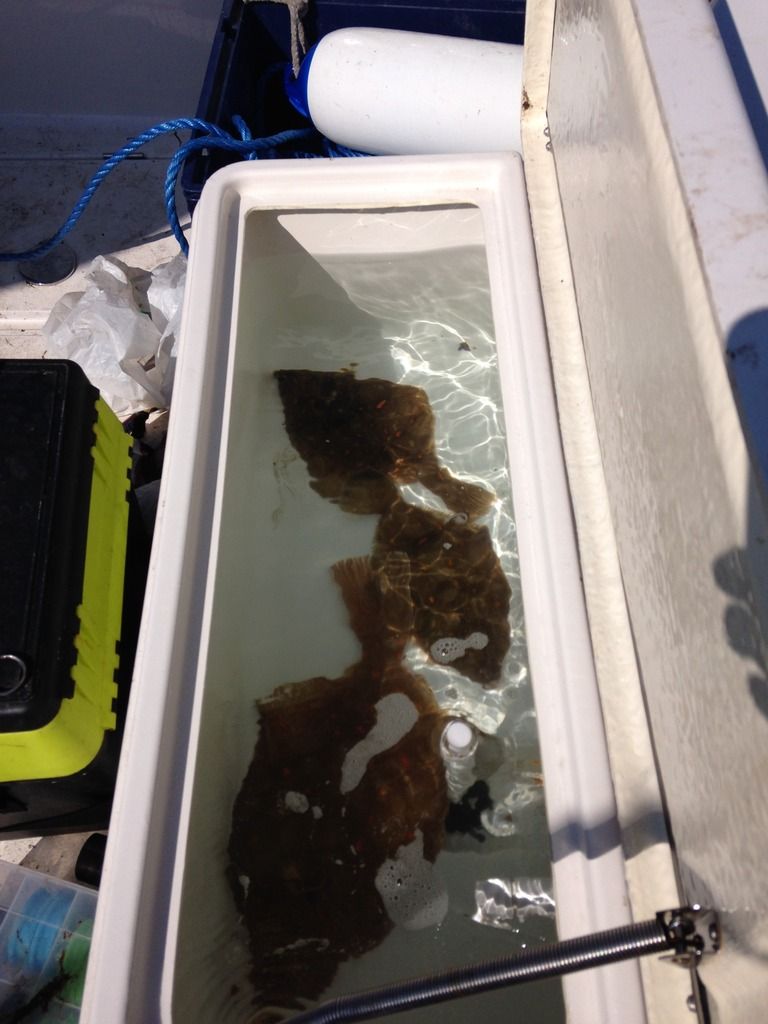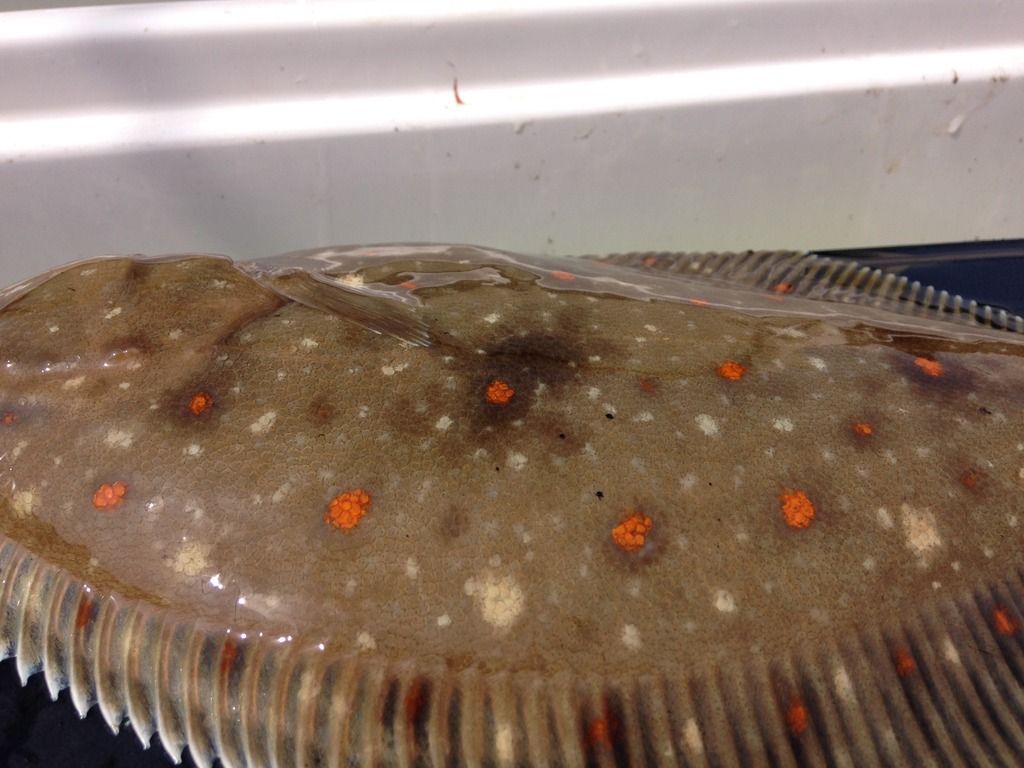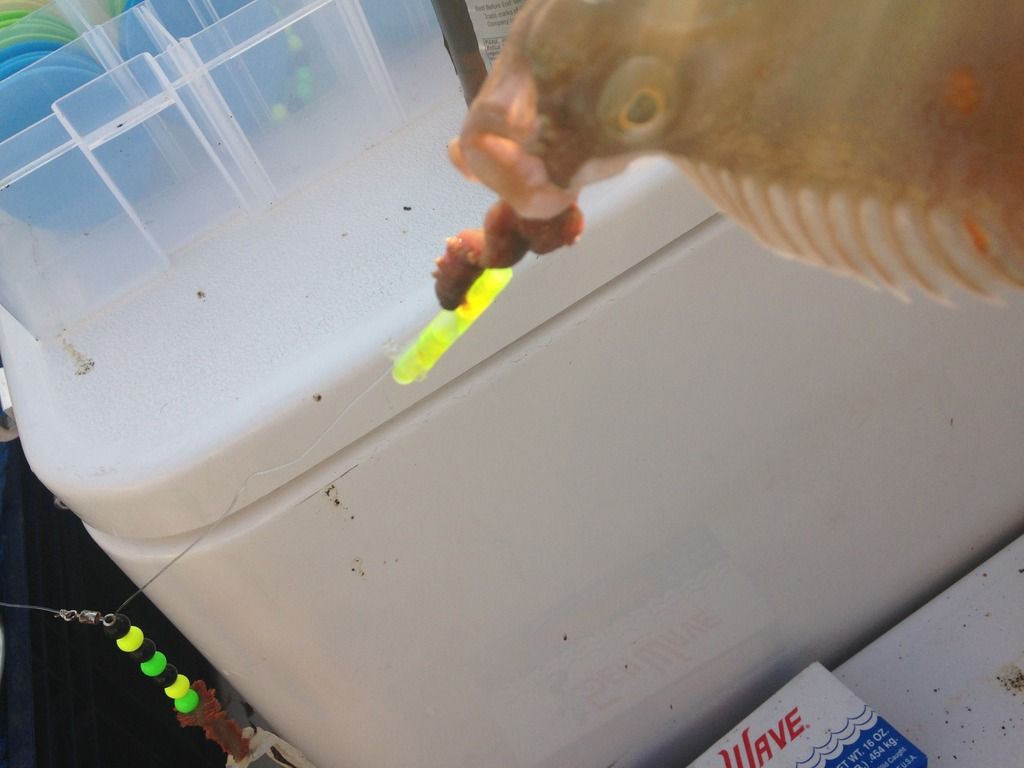Post by Admin on Mar 9, 2016 17:52:00 GMT
Plaice Minimum landing size 28cm
As the winter draws to a close I always look forward to making up some new plaice rigs,
Grabing some worms & squid and head out on La pesca for a spot of plaice fishing.
The Scientific name is Pleuronectes platessa, Most of us know it as the European Plaice.
The boat caught record stands at 10lb-3-8 taken in 1974 out of Scotland
Plaice spend the winter in deeper water out at sea where they spawn, but move in a lot closer to shore from March-September, During these warmer months plaice tend to be more active at night, burrowing under sand and mud and staying fairly stationary during the day, although when in deeper water, or when just returned from spawning, they will feed through the day.
Plaice are often found in estuaries and can survive quite a low salinity content of water, although not to the same extent as flounder and they will not travel up rivers in the same way that flounder do. Being a flatfish plaice prefer sandy or muddy seabeds, but they can also be found in small sandy patches between mixed and rocky ground, Most anglers begin the catch plaice in the spring, as they begin to return from spawning in deeper, offshore waters. Plaice caught at this time of year can be thin and in poor condition due to the effort of migrating, but once they begin to feed their weight increases and condition improves. Although they are a small fish, usually (growing to a maximum of just over two feet with most being substantially smaller than this) plaice are aggressive little predators and will take most of the common sea fishing baits.
Anglers fishing for plaice will often use relatively light equipment such as a bass rod or a specialist flatfish rod.
Rig Wise, most anglers tend to use a wishbone rig or spreader bar rig Traces can be simple 2 hook clipped paternosters armed with size 2 Aberdeen and even 3 hook flapper rigs the addition of colourful beads, sequins and blades above the hook baits are proven catch boosters. Specialist Plaice beads are incredibly popular in some regions where as in others, a sequence of red and yellow beads above the hook are established tradition. Personally my bead choice is black and green, Again, this is an area for personal preference but there is certainly nothing to suggest that these additions would have a detrimental effect on catches.
Plaice are not so active during the day, they love to lay around in the sand, probably chilling out with a beer or two I would think, Drifting for them is always a good option, Plaice are inquisitive and are therefore attracted to sequins and beads on the hooklengths, They cannot resist a nice flapping bait I always use Rag worm tipped with a slither of squid to give it a bit of movement in the water.
I personally forget the Christmas tree rigs with all the glitter and glitz and just use a simple green starlite,(Rod tip light) I find this is a fantastic way to catch plaice and it’s got a pretty good success rate to be fair,Although I am yet to try this method at night, Im thinking it will be too bright by night but I will let you know how it goes,
It doesn’t get much better then waking up on a cold spring morning, clear blue skys followed by bright sunshine, head out for a spot of plaice fishing & when you see them beautiful red dots coming up to the surface its well worth the effort, Unluckily for the Plaice they Taste dam good too.
[img src="http://i1268.photobucket.com/albums/jj564/stu1k/Plaice%20Fishing/Stuie%20102_zpsj2p2cyw1.jpg" src=![]() [/URL]
[/URL] 


 " alt=" "]
" alt=" "]
As the winter draws to a close I always look forward to making up some new plaice rigs,
Grabing some worms & squid and head out on La pesca for a spot of plaice fishing.
The Scientific name is Pleuronectes platessa, Most of us know it as the European Plaice.
The boat caught record stands at 10lb-3-8 taken in 1974 out of Scotland
Plaice spend the winter in deeper water out at sea where they spawn, but move in a lot closer to shore from March-September, During these warmer months plaice tend to be more active at night, burrowing under sand and mud and staying fairly stationary during the day, although when in deeper water, or when just returned from spawning, they will feed through the day.
Plaice are often found in estuaries and can survive quite a low salinity content of water, although not to the same extent as flounder and they will not travel up rivers in the same way that flounder do. Being a flatfish plaice prefer sandy or muddy seabeds, but they can also be found in small sandy patches between mixed and rocky ground, Most anglers begin the catch plaice in the spring, as they begin to return from spawning in deeper, offshore waters. Plaice caught at this time of year can be thin and in poor condition due to the effort of migrating, but once they begin to feed their weight increases and condition improves. Although they are a small fish, usually (growing to a maximum of just over two feet with most being substantially smaller than this) plaice are aggressive little predators and will take most of the common sea fishing baits.
Anglers fishing for plaice will often use relatively light equipment such as a bass rod or a specialist flatfish rod.
Rig Wise, most anglers tend to use a wishbone rig or spreader bar rig Traces can be simple 2 hook clipped paternosters armed with size 2 Aberdeen and even 3 hook flapper rigs the addition of colourful beads, sequins and blades above the hook baits are proven catch boosters. Specialist Plaice beads are incredibly popular in some regions where as in others, a sequence of red and yellow beads above the hook are established tradition. Personally my bead choice is black and green, Again, this is an area for personal preference but there is certainly nothing to suggest that these additions would have a detrimental effect on catches.
Plaice are not so active during the day, they love to lay around in the sand, probably chilling out with a beer or two I would think, Drifting for them is always a good option, Plaice are inquisitive and are therefore attracted to sequins and beads on the hooklengths, They cannot resist a nice flapping bait I always use Rag worm tipped with a slither of squid to give it a bit of movement in the water.
I personally forget the Christmas tree rigs with all the glitter and glitz and just use a simple green starlite,(Rod tip light) I find this is a fantastic way to catch plaice and it’s got a pretty good success rate to be fair,Although I am yet to try this method at night, Im thinking it will be too bright by night but I will let you know how it goes,
It doesn’t get much better then waking up on a cold spring morning, clear blue skys followed by bright sunshine, head out for a spot of plaice fishing & when you see them beautiful red dots coming up to the surface its well worth the effort, Unluckily for the Plaice they Taste dam good too.
[img src="http://i1268.photobucket.com/albums/jj564/stu1k/Plaice%20Fishing/Stuie%20102_zpsj2p2cyw1.jpg" src=



 " alt=" "]
" alt=" "]








